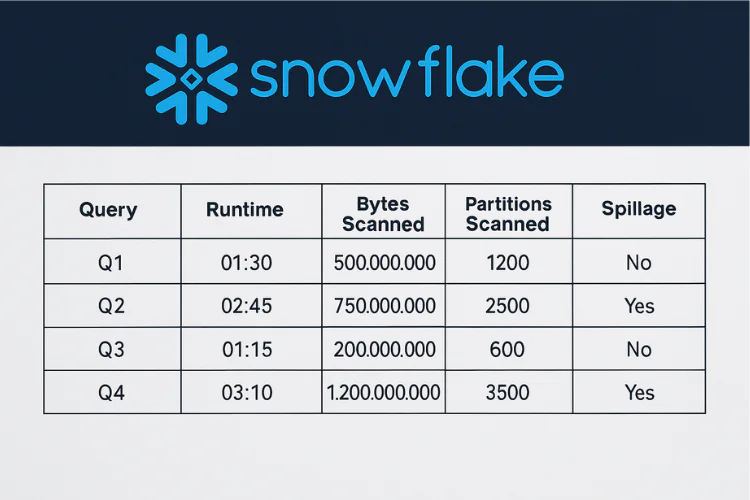The ability to harness data effectively is no longer a luxury but a necessity for modern organizations. Data fuels decision-making, innovation, and operational efficiency, and as businesses continue to generate massive volumes of data from a multitude of sources, the complexity of managing, processing, and analyzing this data has skyrocketed. Traditional methods of data management—reliant on siloed teams and manual processes—are no longer sufficient to keep up with the demand for real-time insights.
DataOps, a paradigm shift in how organizations approach data workflows. Combining principles of agile development, DevOps, and lean manufacturing, DataOps emphasizes automation, collaboration, and continuous improvement in data operations. DataOps tools play a pivotal role in this transformation, providing the frameworks and capabilities that empower teams to build resilient pipelines, ensure high-quality data, and achieve real-time observability.
The availability of these tools has grown dramatically, offering both open source dataops tools and robust enterprise solutions. This diversity gives organizations the flexibility to tailor their DataOps strategies to specific needs, whether they prioritize cost efficiency, scalability, or cutting-edge analytics.
Why DataOps Is Essential for Modern Data Teams
The sheer volume of data generated by organizations today creates significant challenges. Many data teams struggle to overcome hurdles such as fragmented data sources, unpredictable scalability requirements, and the inability to quickly diagnose pipeline issues. Without effective dataops pipeline tools, these challenges can lead to operational inefficiencies, missed insights, and costly downtime.
Tools specifically designed for DataOps address these challenges by introducing automation, observability, and integration across the data lifecycle. For instance, they enable seamless pipeline orchestration, ensuring that data flows smoothly from ingestion to analysis, regardless of the source or format. Additionally, real-time monitoring provides visibility into pipeline health, allowing teams to proactively address anomalies or inefficiencies before they escalate.
By incorporating DataOps principles, organizations can achieve:
- Greater agility in responding to business needs.
- Improved data quality through automated validation.
- Lower operational costs by optimizing resource usage.
The result is a cohesive data ecosystem that supports timely, accurate, and actionable insights.
Features to Look for in DataOps Tools
When evaluating tools for DataOps, the choice should align with the specific needs of your organization. While many platforms promise end-to-end solutions, their suitability often depends on features such as automation, scalability, and integration capabilities.
One critical feature is real-time observability. In modern data environments, where even a minor delay can disrupt workflows, having tools that offer live insights into data flows is invaluable. These tools not only detect anomalies but also provide root cause analysis, enabling swift resolutions.
Another essential feature is flexibility in pipeline management. The ability to design, deploy, and modify pipelines without significant manual intervention ensures that teams can adapt quickly to changing requirements. Platforms that integrate seamlessly with popular data ecosystems like Snowflake, Databricks, and BigQuery also stand out, as they reduce the effort required to connect disparate tools.
Cost optimization is another major consideration. Many of these tools now come with built-in analytics to track resource usage and identify inefficiencies, allowing teams to make informed decisions about scaling and budget allocation.
Best DataOps Platforms for Observability and Management in 2025
1. Chaos Genius
Chaos Genius is a cutting-edge AI-driven observability platform designed to help organizations identify and resolve data anomalies at scale. Leveraging machine learning, Chaos Genius enables proactive monitoring and root cause analysis for data pipelines, ensuring high availability and reliability. It integrates seamlessly with major cloud providers like AWS, Azure, and GCP, making it an essential tool for businesses with complex, high-frequency data operations. Its customizable dashboards offer real-time metrics, giving data engineers unparalleled visibility into their pipelines.
Key Features:
- Automated anomaly detection.
- Real-time monitoring of high-frequency data.
- AI-powered root cause analysis.
- Seamless integration with cloud platforms like AWS, Azure, and GCP.
- Customizable dashboards for pipeline metrics.
2. Snowflake Data Cloud
Snowflake is a robust cloud-based data platform that streamlines data storage, processing, and sharing. Known for its scalability, Snowflake supports both batch and real-time pipelines with tools like Snowpipe and Snowpark. Its architecture allows compute and storage to scale independently, optimizing both performance and cost. Features such as auto-clustering, secure data sharing, and support for semi-structured data make it a versatile choice for businesses looking to modernize their data operations. Snowflake also integrates with open-source tools like dbt, further enhancing its flexibility.
Key Features:
- Snowpipe for continuous data ingestion.
- Auto-clustering to optimize data storage.
- Secure and scalable data sharing capabilities.
- Advanced query optimization features.
- Integration with open-source DataOps tools like dbt.
3. Apache Airflow
Apache Airflow is a widely used open-source orchestration tool that allows teams to design, schedule, and monitor workflows programmatically. Its Directed Acyclic Graph (DAG)-based approach provides a clear structure for managing dependencies between tasks. Airflow’s extensibility through Python makes it a favorite among developers for creating complex workflows that span multiple systems. With its intuitive web UI, teams can monitor task progress and debug issues in real time. Its compatibility with tools like Hadoop, Kubernetes, and Snowflake makes it a cornerstone for DataOps.
Key Features:
- DAG-based pipeline orchestration.
- Python extensibility for custom workflows.
- Scalable task execution across distributed environments.
- Extensive monitoring through logs and a web UI.
- Broad compatibility with popular data platforms.
4. Databricks
Built on Apache Spark, Databricks unifies data engineering, machine learning, and analytics in a single platform. Its Delta Lake technology ensures data reliability by providing ACID transactions and schema enforcement. Databricks excels in large-scale data processing, making it a top choice for organizations dealing with big data and real-time analytics. With collaborative notebooks and built-in machine learning capabilities, it empowers teams to analyze and act on their data faster. Databricks seamlessly integrates with cloud storage and various third-party tools, adding to its versatility.
Key Features:
- Unified platform for data engineering, analytics, and machine learning.
- Delta Lake for data reliability and version control.
- Collaborative notebooks for real-time teamwork.
- Scalable big data processing using Apache Spark.
- Built-in machine learning capabilities for predictive analytics.
5. Prefect
Prefect is a modern orchestration platform designed to handle the complexities of dynamic and distributed data workflows. Unlike traditional orchestrators, Prefect offers a hybrid execution model that separates the orchestration layer from task execution, enabling greater flexibility and scalability. Its user-friendly interface allows teams to quickly design workflows, while its API-driven architecture ensures seamless integration with other tools. Prefect also emphasizes real-time observability, providing instant insights into pipeline performance and errors.
Key Features:
- Flexible hybrid execution model.
- Dynamic task mapping based on runtime conditions.
- Real-time error tracking and insights.
- Low-code interface for simplified workflow creation.
- API-driven architecture for seamless integrations.
6. dbt (Data Build Tool)
dbt revolutionizes data transformations by enabling engineers to define transformations as SQL select statements, streamlining the process of building and maintaining data pipelines. It automates testing, documentation, and version control, making it easier for teams to manage complex transformations at scale. dbt integrates effortlessly with modern cloud data warehouses like Snowflake and BigQuery, ensuring compatibility with existing infrastructures. Its vibrant open-source community provides extensive support and resources for new users.
Key Features:
- SQL-first transformation framework.
- Automated testing and version control for data models.
- Comprehensive documentation generation.
- Seamless integration with cloud data warehouses like Snowflake and BigQuery.
- Extensive community support for open-source users.
7. Great Expectations
Great Expectations focuses on data quality and validation, enabling teams to define and enforce rules that ensure data integrity across pipelines. Its flexible, open-source framework supports integration with a wide range of data platforms and can be customized to fit unique business requirements. By automating data testing and generating detailed reports, Great Expectations provides visibility into data quality, reducing the risk of downstream errors and increasing trust in analytics outputs.
Key Features:
- Automated data testing and validation.
- Pre-built connectors for diverse data platforms.
- Flexible configuration for complex testing requirements.
- Detailed reports for tracking test outcomes.
- Open-source extensibility for custom solutions.
8. Dagster
Dagster is a workflow orchestration tool designed with modularity and scalability in mind. Its dependency-aware pipeline execution ensures efficient use of resources and simplifies error handling. Dagster’s focus on reproducibility and testing makes it ideal for teams looking to maintain high-quality pipelines. It supports both local and cloud-based workflows, providing flexibility for diverse operational needs. With built-in observability features, Dagster allows teams to monitor and debug their workflows with ease.
Key Features:
- Dependency-aware pipeline design for efficient execution.
- Built-in observability for real-time monitoring.
- Support for local and cloud-based workflows.
- Testing capabilities to ensure data integrity.
- Rich integration with popular data platforms.
9. Finout
Finout is a cost observability platform designed to give organizations granular insights into their cloud and DataOps spending. It consolidates cost data from various platforms into a unified dashboard, allowing teams to identify inefficiencies and prevent budget overruns. Finout’s anomaly detection features alert teams to unexpected spending spikes, ensuring financial control over data operations. Its compatibility with cloud providers like AWS and data tools like Snowflake makes it a valuable addition to any DataOps strategy.
Key Features:
- Unified cost dashboards for cloud and DataOps tools.
- Anomaly detection for unexpected spending spikes.
- Integration with major cloud providers and data platforms.
- Granular insights into resource usage.
- Real-time alerts to prevent budget overruns.
10. Talend Data Fabric
Talend provides an end-to-end platform for data integration, transformation, and quality management. Its hybrid architecture supports batch and real-time pipelines, making it suitable for diverse use cases. Talend’s built-in data quality features help ensure that data is accurate and reliable throughout its lifecycle. With support for over 1,000 data sources and seamless integration with cloud environments, Talend simplifies complex data workflows, empowering teams to focus on delivering insights rather than managing infrastructure.
Key Features:
- End-to-end data integration for batch and real-time pipelines.
- Built-in data quality checks to ensure integrity.
- Support for hybrid and multi-cloud environments.
- Scalable ETL and ELT capabilities.
- Advanced connectivity with over 1,000 data sources.
How DataOps Tools Drive Operational Excellence
The adoption of DataOps tools is more than a technical decision—it’s a strategic imperative. By automating routine tasks and providing unparalleled visibility into data operations, these tools enable teams to focus on innovation and value creation.
For example, observability platforms like Chaos Genius reduce the cognitive load on engineers by automating anomaly detection, while orchestration tools like Airflow and Prefect streamline the deployment of complex workflows. Cost-focused platforms like Finout ensure that resources are used efficiently, preventing budget overruns and optimizing cloud spend.
This combination of efficiency, insight, and adaptability not only improves operational performance but also enhances the organization’s ability to deliver timely and impactful business insights.
Choosing the Right DataOps Tool
The rapid evolution of data ecosystems demands a proactive approach to data management. DataOps tools are at the forefront of this shift, offering the scalability, automation, and observability required to meet the challenges of modern data operations. By embracing these tools, organizations can transform their data pipelines from cumbersome processes into streamlined systems that deliver consistent, high-quality results.
The diversity of tools available today, from open-source platforms like Apache Airflow to enterprise solutions like Databricks and Snowflake, ensures that every organization can find a solution that fits its unique needs. For smaller teams, tools like Prefect and dbt offer simplicity and flexibility, while larger enterprises may benefit from the robust features of platforms like Chaos Genius and Snowflake.
The benefits of adopting such tools extend beyond efficiency gains. They foster a culture of collaboration, agility, and continuous improvement, aligning with the broader goals of innovation and growth. As organizations look ahead to 2025 and beyond, the ability to implement and optimize DataOps strategies will be a key differentiator in their success.
Ready to embrace the future of data management? The tools highlighted in this guide are your gateway to achieving streamlined operations, actionable insights, and a competitive edge in the data-driven world.
Learn how Seemore Data can unlock your ability to optimize data management and observability — book a demo today









